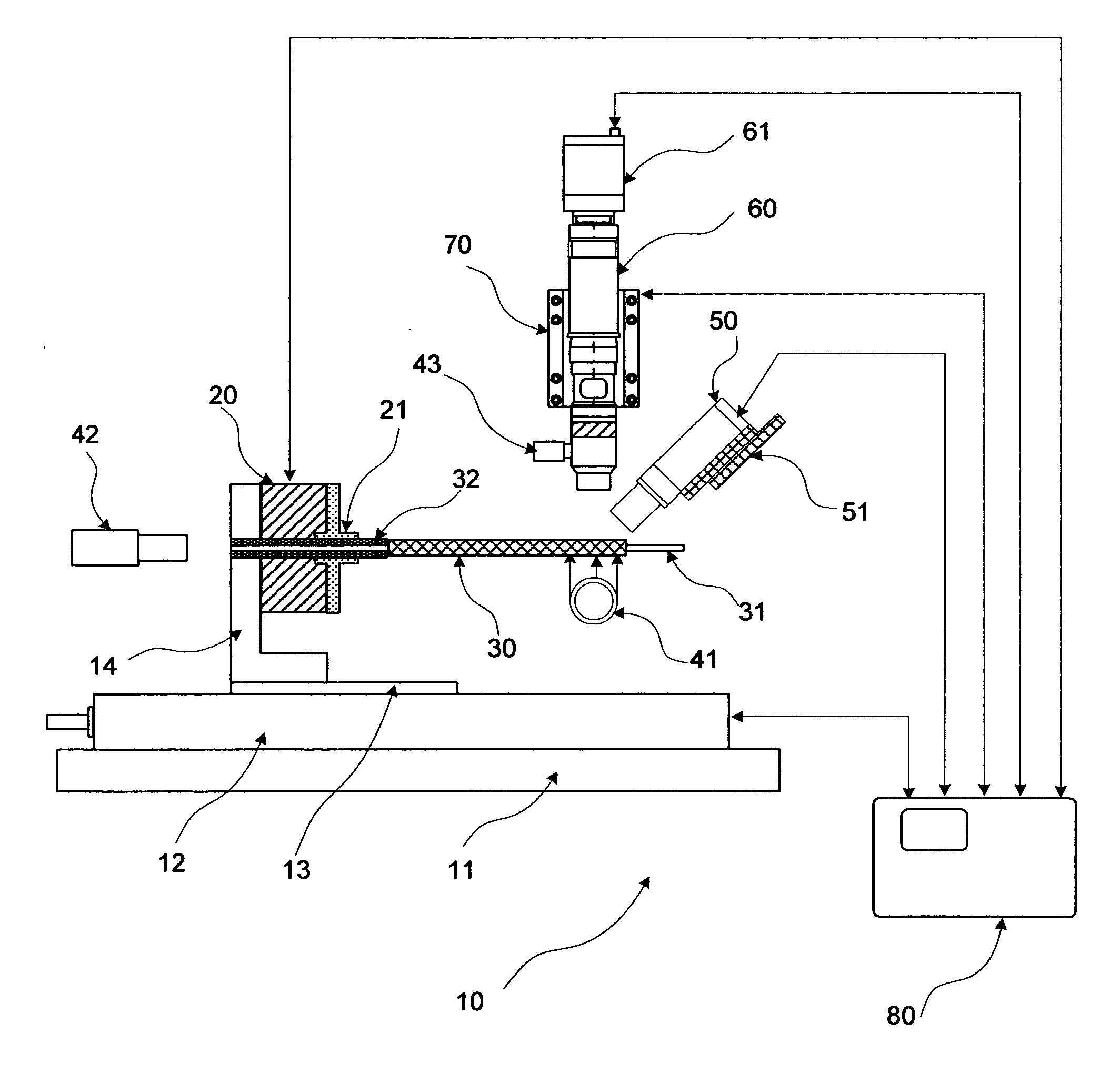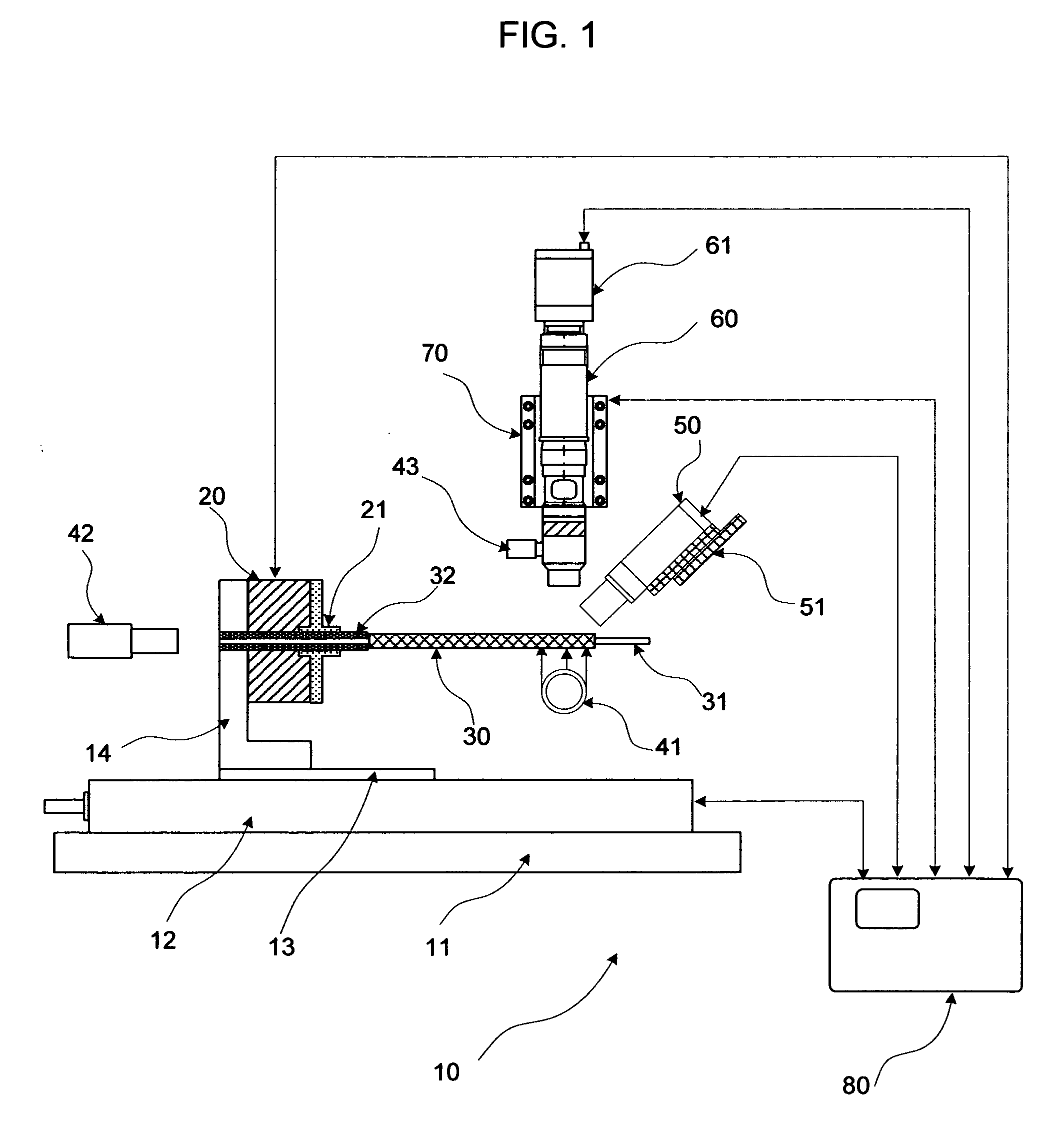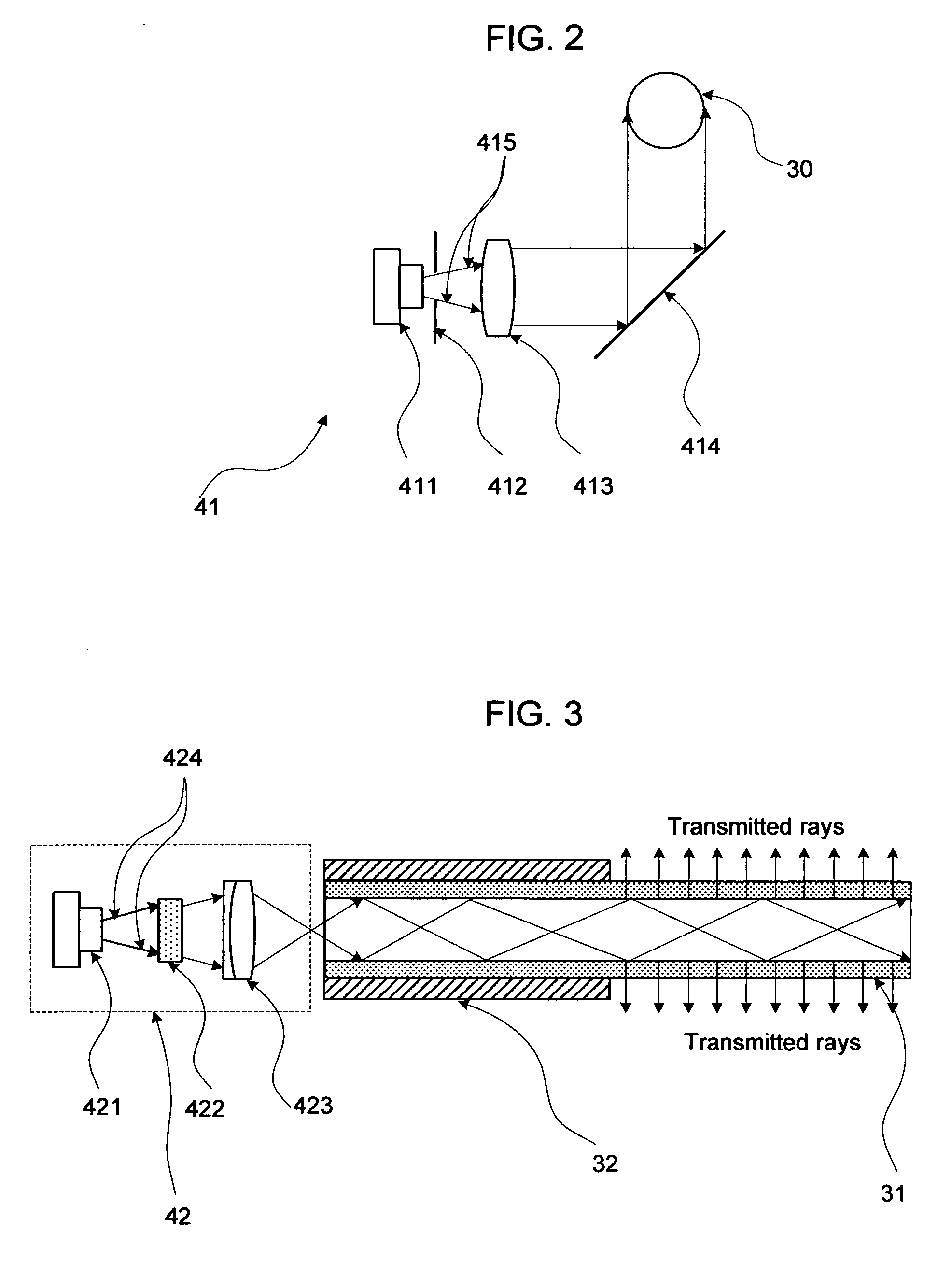Automatic stent inspection system
a stent and automatic technology, applied in the field of stent inspection, can solve the problems of inability to perform all the inspection tasks mentioned above in an automatic manner, laborious and time-consuming manual stent inspection process, and patient death or serious injuries
- Summary
- Abstract
- Description
- Claims
- Application Information
AI Technical Summary
Benefits of technology
Problems solved by technology
Method used
Image
Examples
second embodiment
[0064]Now referring to FIGS. 5 and 13, in the present disclosure, the system 10 is used to inspect a stent with relatively large geometric dimensions. In this case, the magnification of the zoom lens 63 can be set to the lower end, increasing both the field of view and the depth of the field of the of optical imaging subsystem 60. As a result, the depth of field becomes large enough to compensate variations of the vertical position of the stent 30 due to stage motion and dimensional derivations. It becomes unnecessary to actively control the movement of the vertical stage 70 to keep the working distance of the optical imaging subsystem 60 constant, as described in the above embodiment. In other words, the auto-focusing function performed by the vertical stage 70 can be turned off. Instead, the vertical stage 70 can be set to the pre-determined position and keep unchanged during the inspection cycle: Steps 1 through 4 described above. By doing so, the time spent on auto-focus adjustm...
third embodiment
[0066]Now referring to FIG. 1 and FIGS. 14A-D, in the present disclosure, the system 10 is used to inspect a drug eluting stent, or DES. A drug eluting stent consists of a metallic stent covered with drug-containing film to prolong drug release. In this case, the defects to be detected are film related, such as voids, flakes, and bridges across struts shown in FIGS. 14A-C. To achieve best detection performance, referring to FIG. 5, a proper type of filter 67 of the optical imaging subsystem 60 is utilized for each specific drug films. The types of the filter 67 include, but not limited to, red, green, blue, bandpass, short-pass, long-pass, UV and IR filters, as well as polarizers. Also the defect detection and classification software installed in the control console 80 uses image processing algorithms different from those used in a bare metal stent inspection.
[0067]Furthermore, the surface-scan profiling subsystem 50 is used to measure surface roughness, thickness and coating unifor...
PUM
 Login to view more
Login to view more Abstract
Description
Claims
Application Information
 Login to view more
Login to view more - R&D Engineer
- R&D Manager
- IP Professional
- Industry Leading Data Capabilities
- Powerful AI technology
- Patent DNA Extraction
Browse by: Latest US Patents, China's latest patents, Technical Efficacy Thesaurus, Application Domain, Technology Topic.
© 2024 PatSnap. All rights reserved.Legal|Privacy policy|Modern Slavery Act Transparency Statement|Sitemap



